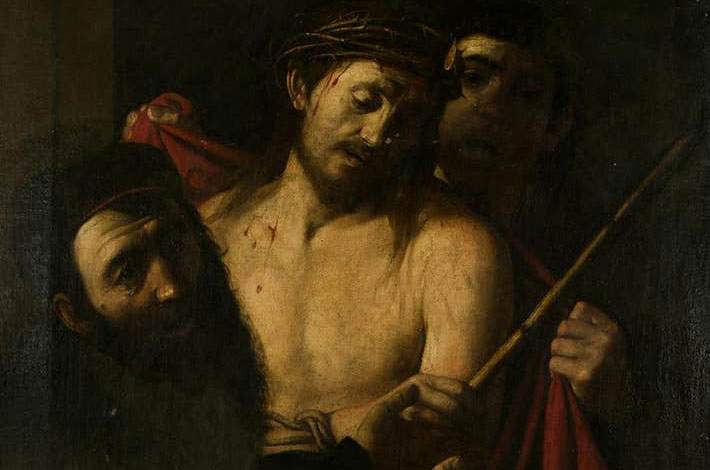Very interesting details have emerged about theEcce Homo that recently re-emerged on the market in an auction by the Madrid-based house Ansorena and attributed by some scholars to Caravaggio. Meanwhile, just today Spanish antiquarian Jorge Coll, managing director of Colnaghi, one of the most important antiquities galleries on the international market, with offices in Madrid, London and New York, released the name of the painting’s owners. The gallery will handle the study, restoration and sale of the painting, which will be examined in the coming days by scholars who are experts on Caravaggio.
Coll, who broke the news to El País newspaper, reported that the owners are Diego, Mercedes, and Antonio Pérez de Castro, sons of Antonio Pérez de Castro, founder in 1957 of the IADE school (one of Madrid’s leading design schools), and Mercedes Méndez Atard, the latter the daughter of the prominent architect Diego Méndez González (Madrid, 1906 - 1987), author, along with Pedro Muguruza (Madrid, 1893 - 1952) of the Valle de los Caídos, the great monumental complex that stands in the town of San Lorenzo de El Escorial, on the outskirts of Madrid. On his father’s side, the family is descended from Evaristo Pérez de Castro (Valladolid, 1769 - Madrid, 1849), a politician and diplomat who was also president of the council of Spain between 1838 and 1840 during the reign of Isabella II. According to Coll, theEcce Homo reportedly came to Diego, Mercedes and Antonio Pérez de Castro by paternal inheritance.
 |
| Caravaggio (attr.), Ecce Homo (oil on canvas, 111 x 86 cm) |
The work was physically located in a property located in the barrio Salamanca, a 19th-century neighborhood of Madrid, but the interesting fact is that, according to information reported by Coll, the owners of the painting would descend from a distinguished family (an element that could play in favor of a high-level attribution). And just today a further interesting clue emerged. This afternoon, the Real Academia de Bellas Artes de San Fernando, the important academy founded by King Ferdinand VI in 1752, issued a note releasing the results of some archival research carried out by scholar Itziar Arana, Coordinator of the Real Academia’s Centro de Estudios I+D+I (Investigación, Desarrollo e Innovación). According to what the scholar discovered by consulting archival material, Evaristo Pérez de Castro in 1823 allegedly proposed to the Real Academia the exchange of a work he owned (a Saint John the Baptist attributed to Alonso Cano) in exchange for a work of the Real Academia to be chosen among four. Among the four works from which Pérez de Castro could choose was an “Ecce-Hommo con dos saiones de Carabaggio número 155 del catálogo.” By order of February 16, 1823, the Academy approved this exchange, as shown in archival documents. Arana, contacted by El País, let the Spanish daily know that the Real Academia’s records document the constant presence of this “Caravaggio” between 1817 and 1821.
“With this news,” the Real Academia makes known, “we want to make known to those who follow us the research and advisory work in favor of Spain’s historical and artistic heritage that is carried out at this academy.” Spain a few days ago initiated proceedings to place the work under a cultural interest restriction.
TheEcce Homo is currently under examination at a location that has not been disclosed for obvious security reasons. At the moment it is not yet possible to establish links between Caravaggio’s Ecce Homo recorded in the inventories from which the provenance can be assumed (on these pages we have explored the issue in depth with an interview with Rossella Vodret and an interview with Antonio Vannugli) and the “Ecce Hommo” that turns out to be owned by Evaristo Pérez de Castro, but those that have emerged in the last few hours are nonetheless news of great relevance, which may help dispel the clouds around the work.
 |
| Ecce Homo attributed to Caravaggio, very important details emerge about ownership |
Warning: the translation into English of the original Italian article was created using automatic tools. We undertake to review all articles, but we do not guarantee the total absence of inaccuracies in the translation due to the program. You can find the original by clicking on the ITA button. If you find any mistake,please contact us.